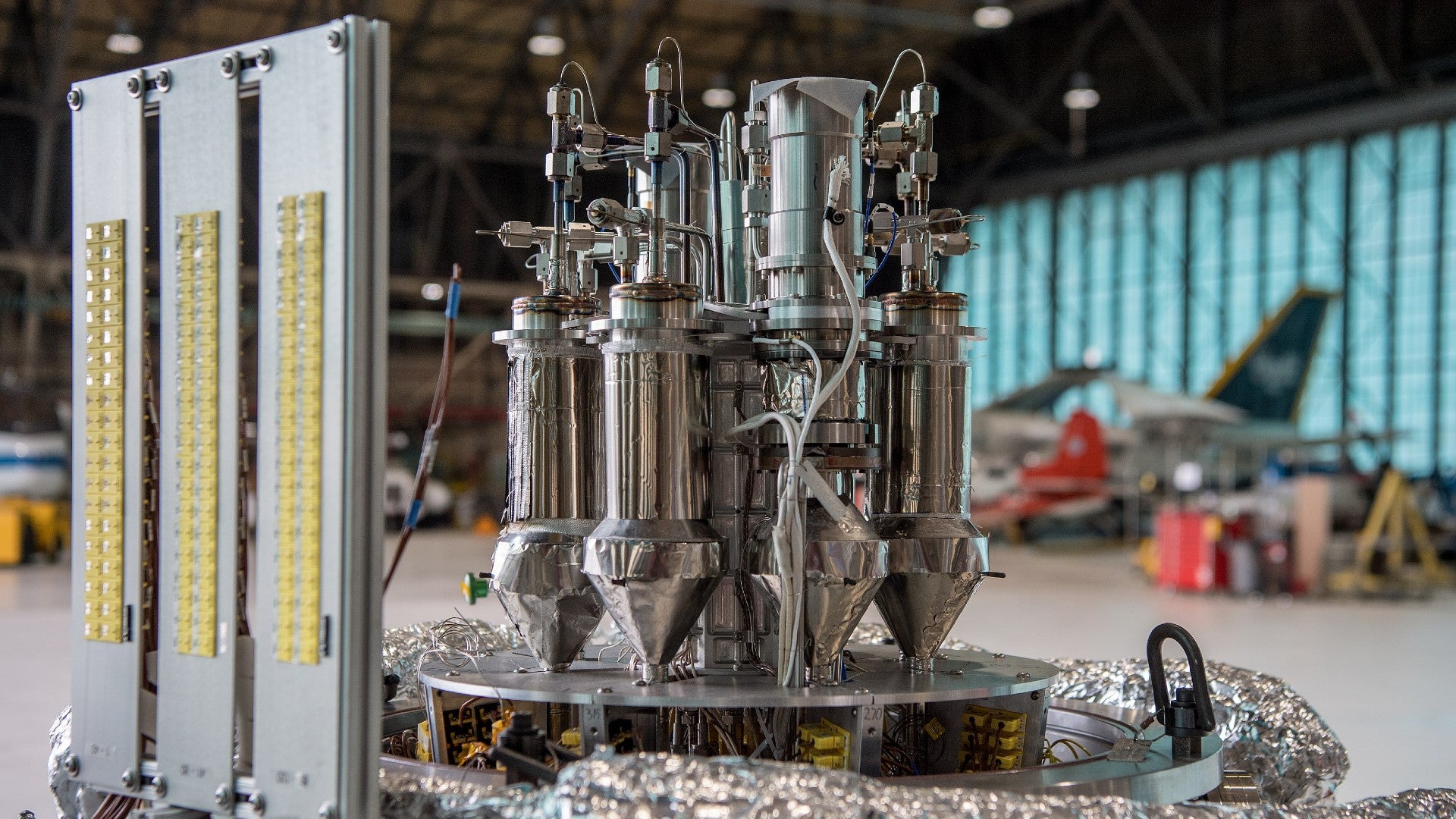excalibur
Diamond Member
- Mar 19, 2015
- 24,700
- 49,105
- 2,290
Small and mini reactors are the way to go. Particularly with the insanity of EV's being forced on people.
You cannot run a grid on wind and solar. You cannot run a grid off of battery storage.
The U.S. Air Force recently announced that it has picked Eielson Air Force Base in Alaska as the base to host a new small nuclear reactor as part of a pilot program. The U.S. military, as a whole, together with the Department of Energy has been increasingly looking into micro-reactor designs as possible ways to meet ever-growing electricity demands, including for units on the battlefield, as well as to help cut costs and improve general operational efficiency by reducing reliance on fossil fuels.
The Department of the Air Force announced the selection of Eielson as the host facility for this pilot reactor on Oct. 18, 2021. The base is situated deep within the interior of Alaska near the city of Fairbanks and is around 110 miles south of the Arctic Circle. It is home to the active-duty 354th Fighter Wing, which flies F-35A Joint Strike Fighters and F-16 Viper aggressor jets, as well as the Alaska Air National Guard's 168th Air Refueling Wing with its KC-135 tankers, among other units.
...
It is not clear exactly what the specifications might be for the reactor that is now set to be constructed at Eielson, which will be Nuclear Regulatory Commission (NRC) certified and contractor-owned and operated, or when it might first go critical or reach its full expected power output. The Air Force did say that the project in question had been initiated in response to language in the annual defense policy bill, or National Defense Authorization Act (NDAA), for the 2019 Fiscal Year and that the goal is for the micro-reactor to be fully operational by the end of 2027.
This would seem to indicate that this reactor is the one that the Office of the Secretary of Defense's Strategic Capabilities Office (SCO) is leading the development of as part of an effort known as Project Pele. The goal of that project, which started in 2019 and that you can read more about here, is to demonstrate a small reactor capable of producing between one and five megawatts of power. By comparison, typical civilian nuclear power plants generate hundreds or even thousands of megawatts. The microreactor Project Pele is seeking is small in terms of power generation even compared to the compact designs used in nuclear-powered submarines, such as the 40-megawatt class S9G used in the U.S. Navy's Virginia class boats.
...

 www.thedrive.com
www.thedrive.com
You cannot run a grid on wind and solar. You cannot run a grid off of battery storage.
The U.S. Air Force recently announced that it has picked Eielson Air Force Base in Alaska as the base to host a new small nuclear reactor as part of a pilot program. The U.S. military, as a whole, together with the Department of Energy has been increasingly looking into micro-reactor designs as possible ways to meet ever-growing electricity demands, including for units on the battlefield, as well as to help cut costs and improve general operational efficiency by reducing reliance on fossil fuels.
The Department of the Air Force announced the selection of Eielson as the host facility for this pilot reactor on Oct. 18, 2021. The base is situated deep within the interior of Alaska near the city of Fairbanks and is around 110 miles south of the Arctic Circle. It is home to the active-duty 354th Fighter Wing, which flies F-35A Joint Strike Fighters and F-16 Viper aggressor jets, as well as the Alaska Air National Guard's 168th Air Refueling Wing with its KC-135 tankers, among other units.
...
It is not clear exactly what the specifications might be for the reactor that is now set to be constructed at Eielson, which will be Nuclear Regulatory Commission (NRC) certified and contractor-owned and operated, or when it might first go critical or reach its full expected power output. The Air Force did say that the project in question had been initiated in response to language in the annual defense policy bill, or National Defense Authorization Act (NDAA), for the 2019 Fiscal Year and that the goal is for the micro-reactor to be fully operational by the end of 2027.
This would seem to indicate that this reactor is the one that the Office of the Secretary of Defense's Strategic Capabilities Office (SCO) is leading the development of as part of an effort known as Project Pele. The goal of that project, which started in 2019 and that you can read more about here, is to demonstrate a small reactor capable of producing between one and five megawatts of power. By comparison, typical civilian nuclear power plants generate hundreds or even thousands of megawatts. The microreactor Project Pele is seeking is small in terms of power generation even compared to the compact designs used in nuclear-powered submarines, such as the 40-megawatt class S9G used in the U.S. Navy's Virginia class boats.
...

This Alaskan Air Base Will Host An Experimental Mini Nuclear Reactor
The military hopes its new mini nuclear reactor will lead to new battlefield energy capabilities and help power its sprawling installations.
